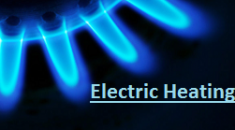Explain different causes of insulation failure in overhead line
Explain different causes of failure occurs in insulators
An insulator must be properly designed so as to withstand mechanical as well as electrical stresses.
Electrical stress on insulator depends on the line voltage, and hence, proper insulators must be used according to the line voltage. Excess electrical stress can break-down the insulator either by flash-
over or puncture.
- Flash over caused by dust deposits: Flash-over: In insulator flash-over, electrical discharge occurs by forming an arc between the line conductor and the insulator pin (which is connected to the cross-arm). The discharge jumps through the air surrounding the insulator following the shortest distance. In case of a flash-over, the insulator continues to act according to its designed capacity unless it gets destroyed due to the excess heat.
- Puncture of weak porcelain: In case of insulator puncture, electrical discharge occurs from conductor to pin through the body of the insulator. Sufficient thickness of porcelain (or the insulator material) must be provided to avoid a puncture breakdown. When such breakdown is involved, the insulator is permanently damaged.
- Deterioration by cracking of the porcelain.
- Porosity
- Shattering by power arcs.
- Failure from mechanical stresses.
- Short circuits by birds & similar objects.





Recent Comments